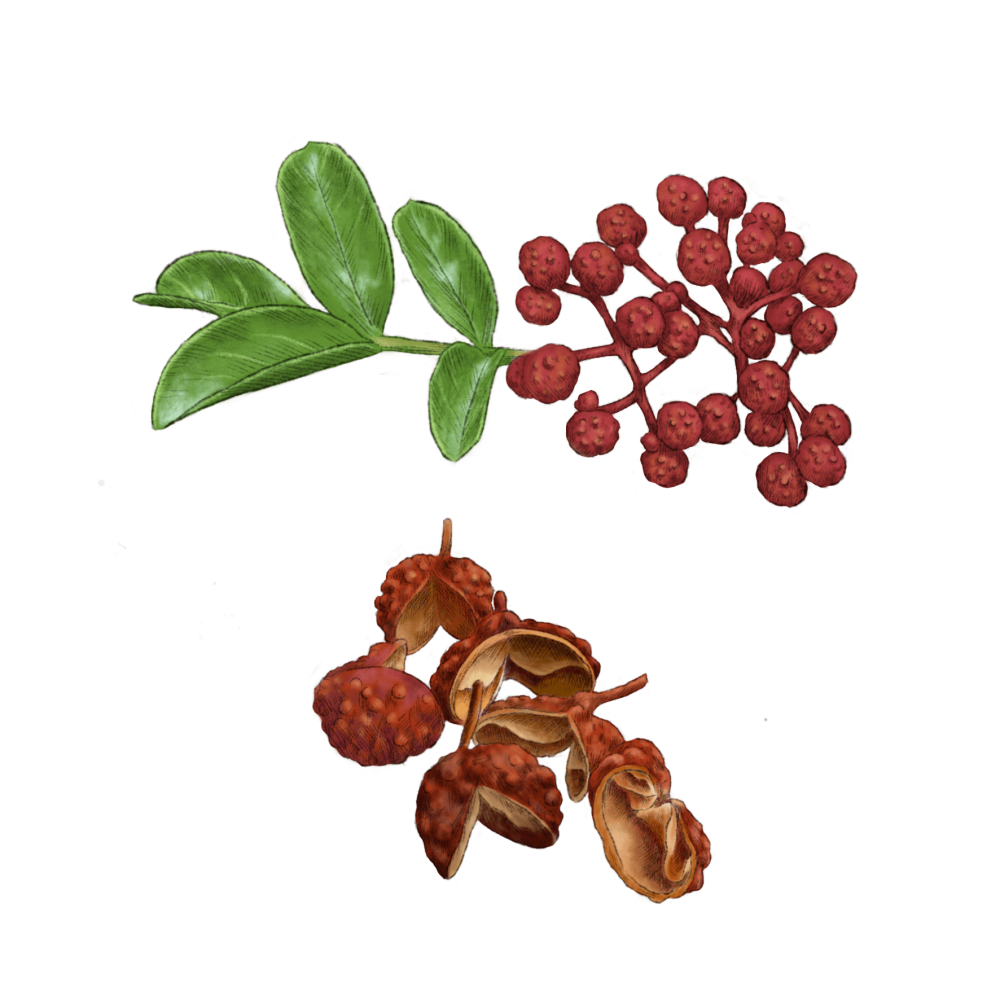Sichuan Peppercorn

Latin Name: Zanthoxylum simulans, Z. armatum, Z. piperatum
Other Names: Chinese or Japanese prickly ash, sanshō (Japanese)
Uses: spice, medicine
What is Sichuan peppercorn?
Sichuan peppercorns are the seed pods of several small trees that are related to citrus. This spice is not true pepper, but if you’ve ever eaten Chongqing hotpot, you’ve no doubt experienced the wonderful mala (“numb-spicy”) qualities of prickly ash. Close relatives are also used in Japanese and Korean cuisine (called sanshō and chopi, respectively), though less frequently.
Why is Sichuan peppercorn healthy?
Prickly ash seeds are full of potent antioxidant and anti-inflammatory compounds. Studies suggest that these alkaloids and flavonoids may reduce pain from osteoarthritis, alleviate digestive ailments like gastritis, and inhibit the growth of harmful bacteria and fungi. The seeds’ analgesic effects have made them popular in traditional medicine systems for relieving toothaches as well as coughs, malaria, and some infections.
What does Sichuan peppercorn taste like?
Sichuan peppercorn has a bracing, piney-citrus flavor. Eating it causes a numbing, tingling sensation in the mouth, thanks to the compound hydroxy-alpha sanshool. The red variety (Z. simulans) has a stronger flavor than green (Z. armatum), which is more fragrant and intensely numbing. Japanese prickly ash, or sanshō (Z. piperitum) has a more pronounced terpene-citrus flavor, reminiscent of yuzu.
How do I use Sichuan peppercorn?
The best way to use Sichuan peppercorn is to toast it in a hot, dry wok, and then crush it in a mortar and pestle before adding to your dish. Sichuan peppercorn’s pungency is its greatest gift — it can cut through the most savory, oily, and spicy foods and hold the spotlight. It plays best (and is most often paired) with other aromatics like garlic and scallion, ginger, chile, star anise, fennel seed, sesame seeds, and dried citrus peel. Sichuan peppercorn is typically added to five spice and shichimi togarashi spice blends.
What does Sichuan peppercorn pair well with?
Because it’s a citrus relative, don’t be afraid to use Sichuan peppercorn with other citrus and to punctuate sweet dishes. It likes honey, vanilla, and creamy custards just as much as chile oil and tofu.
Where does Sichuan peppercorn grow?
The various Zanthoxylum species are small, shrubby trees native to East, Southeast, and South Asia. Though they’re mostly grown and used in China, they’re also harvested in India and the Himalayas for medicinal purposes. It’s relatively easy to grow in temperate gardens (USDA hardiness zones 6-9).
How to buy Sichuan peppercorn:
Look for brownish-red or green Sichuan peppercorns in the spice aisle (especially in Asian markets) and store them in a cool, dry place. The powdered version goes stale quickly, so opt to grind your own.
Fun Sichuan peppercorn fact:
The tingling sensation provided by Sichuan peppercorn isn’t just in our heads… or is it? The spice actually activates the mouth’s tactile afferent fibers — nerve receptors that respond to light touch. Our tongues perceive the equivalent of a 50Hz-frequency vibration from eating the numbing spice. That’s about the intensity of the humming of power lines.




